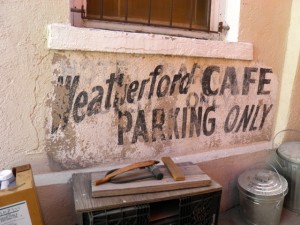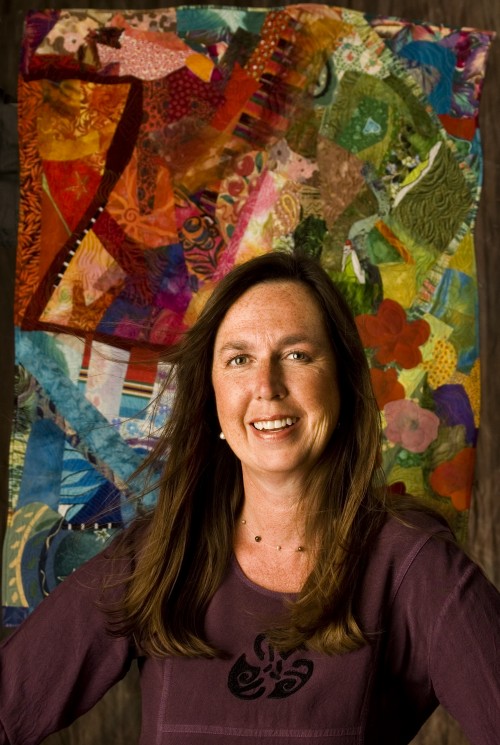When my husband Mike and I moved to Flagstaff in 1986, the town was sweet, but somewhat shabby. It was most certainly not the happening place it is these days.
We temporarily rented a house out by the old fire station just west of Cosnino Road, then bought a house near the intersection of Fourth Street and Lockett Avenue. Our local grocery was the Bayless (the current location of Coconino Community College’s satellite campus). Where Heritage Square now sits, Babbitt’s Department Store sprawled over the block, having been added onto piecemeal for years.
The airport was a low-ceilinged affair, in which giant ponderosa pine logs played supporting roles. “Baggage claim” consisted of incoming luggage being loaded into the back of an aging Datsun pickup truck that was driven up to the backside of the terminal, where the crew opened a sliding glass door and tossed your bags onto a table inside the building.
There were no upscale coffee shops and no urban trail. We gathered at Macy’s for a cappuccino, or made drip coffee at home. We hiked in Buffalo Park.
Giant billboards lined Route 66 next to the railroad tracks through town. There was no Dew Downtown, and no use of water—either potable or reclaimed—for such foolishness as snowmaking. Flagstaff’s downtown suffered from parking woes (some things never change) and general decay. First Friday Art Walk didn’t exist until years later.
In those early days, we had two young boys, and aside from complicated sports practice and game schedules (including spring baseball, which required supportive parents to sit on cold metal bleachers in March, swaddled in blankets, coats and other protective gear), our life was a simple routine of school, meals and the rest of the dailies. Mike’s teaching salary was meager, but marginally sufficient with some creative cost-saving measures.
But then, as now, people were getting married and divorced, and dying from disease and old age and having babies. Those babies grew up. Friendships came and went, some people moved out of town and new people arrived. The detritus—tangible and intangible—accumulated.
Slowly, almost imperceptibly, a civilization is forming, a culture that reflects our values and interests, and our limitations, too. In light of the changes I’ve seen in almost 30 years in this place, I try to imagine the remains that archeologists will find of our settlement in a 1,000 years, or 5,000 years.
Now we have Karma Sushi in place of the Hong Kong Café. The ABC Bar—which I remember as having a piece of plywood for a front door when we first moved here—has been replaced by Flagstaff Brewing Co., one of the first of Flagstaff’s more than half a dozen microbreweries. I can hardly find my way through the NAU campus anymore with all the new buildings and road closures.
All these new developments are the result of a lot of thoughtfulness on the part of citizens and volunteers, entrepreneurs, and even (perhaps especially, in some cases) forward-thinking city council members. Our dark sky city status, our extensive urban trail system and the BBB tax that helps fund so many of our local nonprofits all have played a big role in establishing our town’s unique character. These things we now take for granted would never have happened without innovators on the city council, people like Nat White and Rick Swanson, and the many others who worked to make these things happen.
Because a city is about so much more than basic services. Yes, roads degrade, buildings and equipment outlive their usefulness, and things break and require fixing. Technology evolves. But a city is not about just roads and services. People live here, and our quality of life requires a richly complex, and sometimes messy approach to making our city work.
This afternoon, needing to get out of the house, Mike and I walked downtown to see some friends play music. In a half hour, walking along the urban trail, we made the trek from our house to downtown, strolling past backyard fences next to the Rio de Flag, past the red-winged blackbirds and the ducks and herons that hang out at Frances Short Pond.
A few years ago, KNAU aired a series of radio pieces called Poverty with a View, about how so many people in Flagstaff work for substandard wages in order to be in this beautiful place. It’s true that our town does have some very real and great disparities between the haves and have-nots, and you’ll find talented academics making lattés or pouring beer.
But what also seems to be happening is this: those of us who stay, those who ride out the ups and downs of city council trends and the general economic booms and busts, carve out rich and amazing lives with a little creative maneuvering. Those of us who feel we belong here learn to be inventive, to defy the odds, and to constantly see the place with new eyes.
Perhaps that is the gift in living where prosperity comes hard.
Tonight I stepped into the back yard and breathed in the fresh cold air, looked up at the stars and the waxing moon, and gave thanks for a place that feels like home, but also begs to be re-created and rediscovered.


